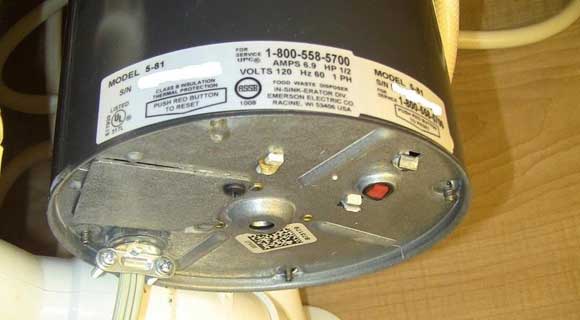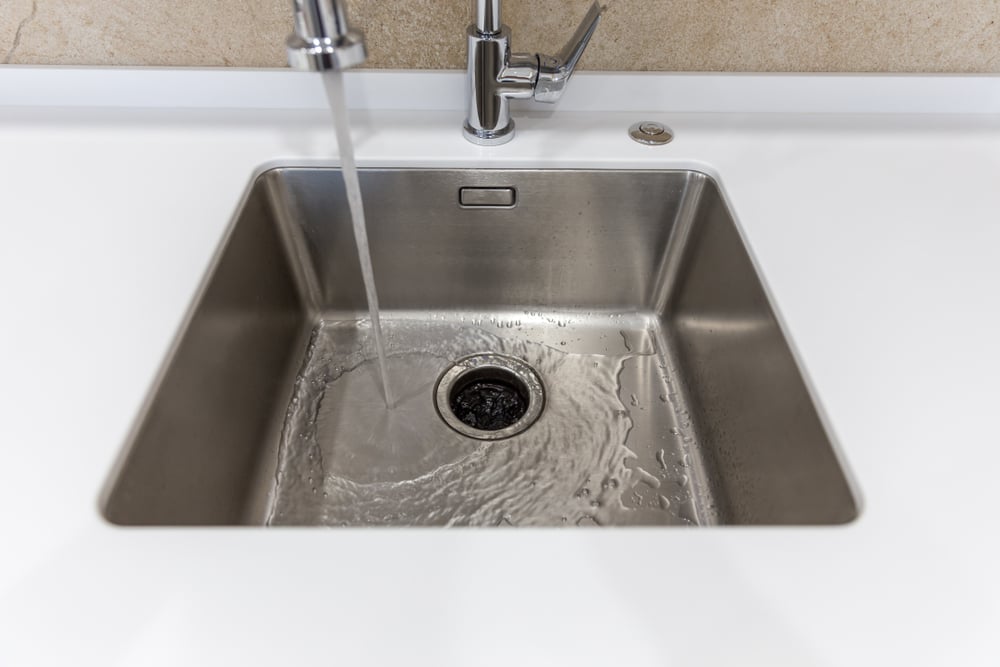Our Guide to Resolving a Leak in Your Garbage Disposal
Our Guide to Resolving a Leak in Your Garbage Disposal
Blog Article
What are your ideas on Garbage Disposal Leaking From Bottom?

Waste disposal unit are necessary cooking area home appliances that help in throwing away food waste effectively. Nevertheless, a dripping waste disposal unit can be a discouraging and untidy trouble to manage. The good news is, several leaks can be fixed conveniently with a couple of easy steps. In this article, we will certainly go over exactly how to repair a dripping waste disposal unit efficiently.
Intro
Waste disposal unit are set up under kitchen sinks and are designed to shred food waste into smaller sized pieces, permitting it to go through the plumbing system conveniently. While these gadgets are normally dependable, leakages can occur with time because of damage, loose connections, or damages to the unit.
Step-by-Step Guide to Taking Care Of a Leaking Garbage Disposal
Switch off the Power
Before attempting any type of repair services, ensure that the power to the garbage disposal system is switched off to stop the risk of electric shock.
Find the Leak
Determine the specific area of the leakage and identify the reason
Tighten Links
Use a wrench to tighten any loose links between the disposal device and the plumbing system.
Change Seals or Gaskets
If the leak results from used seals or gaskets, get rid of the old parts and change them with new ones.
Patching Splits or Openings
For fractures or openings in the disposal system, usage epoxy or a suitable patching product to secure the damaged area.
Recognizing the Source of the Leak
Prior to attempting to repair a dripping garbage disposal, it is important to identify the source of the leak. This can typically be done via visual assessment or by carrying out simple examinations.
Visual Evaluation
Evaluate the waste disposal unit device thoroughly for any type of indications of water leak. Pay close attention to locations around seals, gaskets, and connection points.
Examining for Leakages
One means to test for leaks is by running water through the disposal device and checking for any kind of noticeable indications of leakage.
Typical Root Causes Of Leaks in Trash Disposals
Worn Seals and Gaskets
Seals and gaskets play a crucial role in preventing water from leaking out of the waste disposal unit. Over time, these components can weaken, resulting in leaks around the disposal unit.
Loose Connections
The connections between the waste disposal unit and the plumbing system can end up being loosened with time, causing water to leakage out during operation.
Cracks or Holes in the Disposal Device
Physical damages to the waste disposal unit, such as splits or holes in the real estate, can additionally lead to leaks.
Devices and Products Needed for Repairing a Leaking Waste Disposal Unit
Before starting the repair service procedure, collect the needed devices and products, consisting of a screwdriver, flexible wrench, plumber's putty, substitute seals or gaskets, and epoxy or patching material for repairing fractures or holes.
Examining the Garbage Disposal After Repair
As soon as the fixing is total, evaluate the garbage disposal by running water through it to make sure that the leakage has actually been fixed.
Preventive Upkeep Tips to Prevent Future Leaks
To avoid future leakages, it is necessary to do routine upkeep on your waste disposal unit. This consists of maintaining it tidy, staying clear of placing non-food items or tough items down the disposal, and regularly looking for leakages or various other issues.
Final thought
To conclude, repairing a leaking waste disposal unit is a reasonably uncomplicated process that can be completed with standard devices and materials. By complying with the steps described in this article and exercising preventive upkeep, you can maintain your garbage disposal in good working problem and prevent pricey repair work in the future.
What to Do About a Leaking Garbage Disposal
A leaking garbage disposal often goes unnoticed until you confront a sopping cabinet, a foul-smelling puddle, or an audible drip-drip-drip from the unit. The fix can be frustrating, too, because the leak can stem from a number of components in the system. Fortunately, with a little sleuthing, you can zero in on the leak and—depending on the exact location—stop the icky oozing and repair the component that caused it. Worst case scenario, if it turns out that the garbage disposal must be replaced, installing a new one is a reasonable do-it-yourself task for those with basic plumbing skills. Read on to keep the cash you’d otherwise hand over to a pro.
Prepare to find the leak
Prior to testing the garbage disposal for leaks, unplug it at the wall outlet and turn off the power from the breaker box to prevent electrical shock. Then insert a watertight sink stopper into your sink drain and wipe the unit dry with a clean cloth. In any handy container, mix a few drops of food coloring into a few cups of water, and pour the dyed water onto the sink stopper to help you locate the leak.
Investigate the source
the top, where the disposal meets the sink drain the side, where the dishwasher hose or main drain pipe connects to the disposal or the bottom of the unit Inspect each of these locations while gliding a light-colored rag over the unit; the dyed water will readily show on the rag and reveal the location of the leak. If a leak isn’t immediately apparent, remove the sink stopper and pour a few more cups of dyed water down the sink drain, then check for leaks again. Leaks near the top of the unit are more likely to show themselves while the sink is plugged, while side and bottom leaks are more noticeable while the sink is unplugged.
The metal sink flange that sits directly inside the sink drain is typically sealed around the top with plumber’s putty (a clay-like sealant) and then secured from under the sink with bolts. If the plumber’s putty deteriorates, or the bolts loosen, the flange can no longer form a watertight seal between the sink drain and the disposal—which could cause a leak at the top of the unit.
To reseal the leaky flange, you must first detach the garbage disposal. Start by loosening the screws securing the main drain pipe to the disposal, then loosen the screws in the metal clamp securing the dishwasher hose to the disposal and detach the drain pipe and dishwasher hose from the disposal. Loosen the screws in the mounting ring that connects the disposal to the metal mounting assembly beneath the sink, then pull down the disposal and carefully set it on a clean, dry surface. Loosen the bolts in the mounting assembly with a wrench, then pull down the mounting assembly and set it near the disposal.

Do you really like reading about How to fix a pretty consistent leak from my garbage disposal? Give a remark down the page. We will be glad to hear your feelings about this review. In hopes to see you back again soon. Do you know somebody else who is interested in the subject? Feel free to promote it. Many thanks for your time invested reading it.
Show Details Report this page